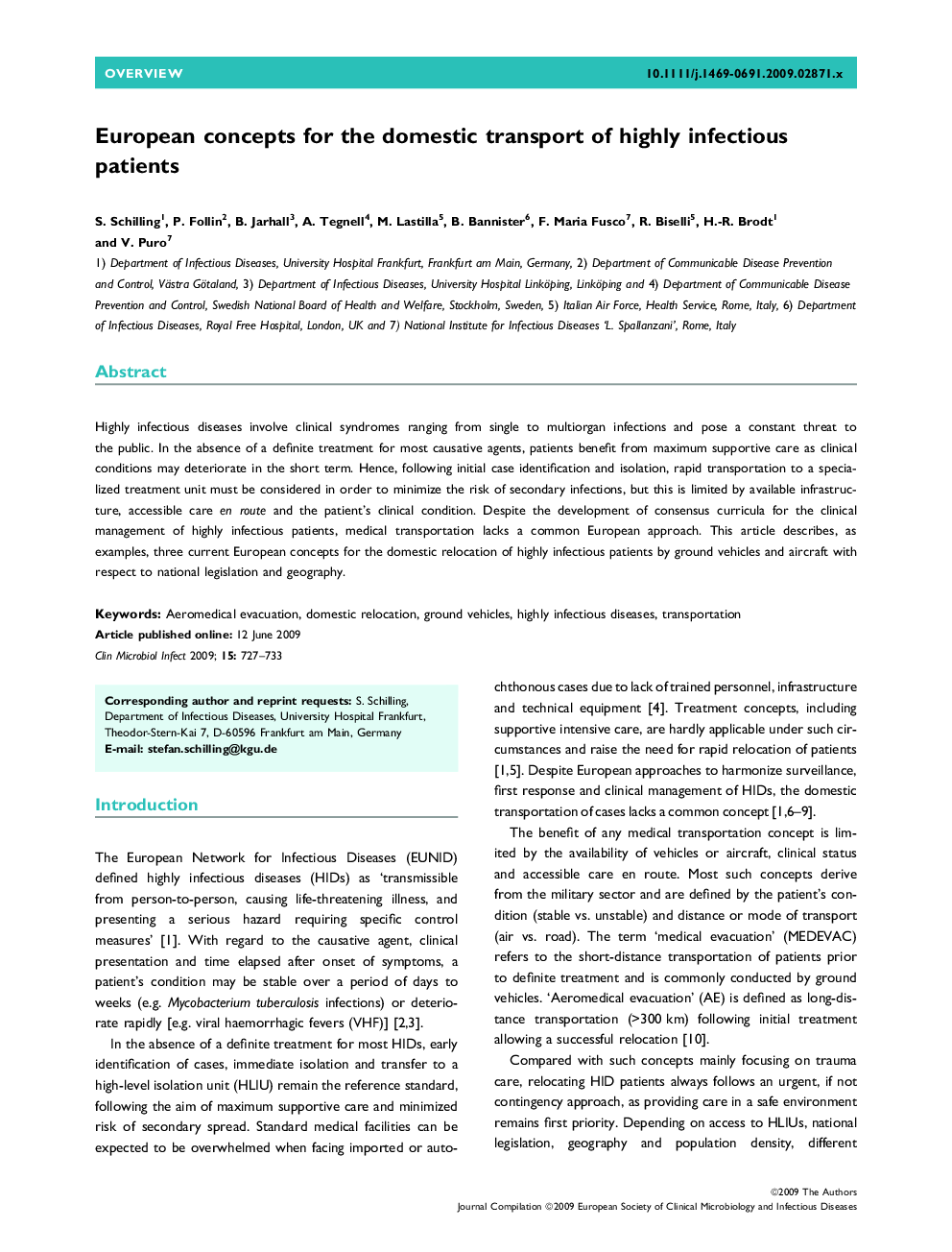| Article ID | Journal | Published Year | Pages | File Type |
|---|---|---|---|---|
| 3397663 | Clinical Microbiology and Infection | 2009 | 7 Pages |
Highly infectious diseases involve clinical syndromes ranging from single to multiorgan infections and pose a constant threat to the public. In the absence of a definite treatment for most causative agents, patients benefit from maximum supportive care as clinical conditions may deteriorate in the short term. Hence, following initial case identification and isolation, rapid transportation to a specialized treatment unit must be considered in order to minimize the risk of secondary infections, but this is limited by available infrastructure, accessible care en route and the patient's clinical condition. Despite the development of consensus curricula for the clinical management of highly infectious patients, medical transportation lacks a common European approach. This article describes, as examples, three current European concepts for the domestic relocation of highly infectious patients by ground vehicles and aircraft with respect to national legislation and geography.
